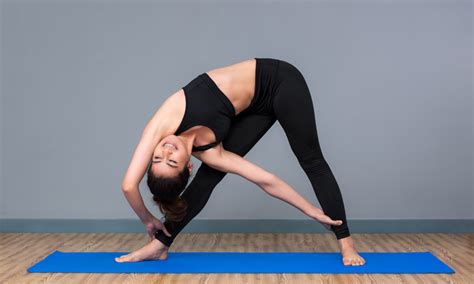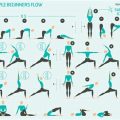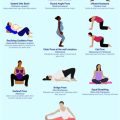Mastering Advanced Yoga: Exploring the Top 5 Challenging Poses for Experts
Yoga, a discipline that has been practiced for centuries, offers more than just physical flexibility and strength. For those who have mastered the foundational poses, advanced yoga provides an opportunity to deepen their practice, both mentally and physically. In this guide, we will explore five of the most complex yoga poses, offering insights into their significance, benefits, and the methods required to achieve them.
Introduction: The Next Level of Yoga Mastery
Advanced yoga isn’t simply about contorting your body into difficult positions. It involves a complete connection between mind and body, a high level of concentration, and refined control over your breath. Mastering these advanced poses requires not just physical strength but also mental fortitude and patience. This article is designed for seasoned yogis who are ready to push the boundaries of their practice by exploring some of the most challenging yoga poses, delving into their history, current techniques, and applications.
Key Concepts for Advanced Yoga
- Strength: Building core, arm, and leg strength is essential to support the body in advanced positions.
- Flexibility: Many complex poses require deep flexibility, particularly in the hips, spine, and shoulders.
- Balance: A strong sense of balance is necessary to maintain stability in many advanced poses.
- Breath Control (Pranayama): Proper breathing techniques enhance both mental focus and endurance.
- Mind-Body Connection: The mental focus needed to execute difficult poses cannot be understated. It’s as much a mental challenge as it is physical.
Historical Context of Advanced Yoga Poses
Many of the advanced poses practiced today are derived from ancient Indian texts, such as the Hatha Yoga Pradipika and the Yoga Sutras of Patanjali. Originally, advanced asanas were seen as a way to prepare the body for long periods of meditation by increasing endurance and removing energy blockages. Over time, these poses evolved to challenge the limits of physical performance while still maintaining their meditative essence. Master yogis, such as B.K.S. Iyengar, brought these advanced forms to the West, making them accessible to modern practitioners.
Current State Analysis: Where Advanced Yoga Fits Today
In today’s world, advanced yoga poses are not just about personal development but also serve as a symbol of dedication and mastery within the yoga community. Fitness culture has increasingly embraced yoga for its holistic benefits, pushing the boundaries of what the human body can do. Social media platforms showcase yogis performing these impressive poses, but it’s essential to remember that these poses should not be attempted without proper preparation, and they remain accessible only to experienced practitioners.
Practical Applications: Beyond the Physical
Advanced poses challenge practitioners not only physically but mentally and emotionally as well. These poses can teach perseverance, patience, and humility. Achieving them often involves confronting physical and psychological barriers, making their mastery an embodiment of personal growth.
- Strength building: Complex poses often engage muscle groups that aren’t typically used in everyday activities.
- Focus: Holding difficult poses requires complete concentration and breath synchronization.
- Confidence: Successfully achieving these poses boosts self-esteem and instills a sense of accomplishment.
Top 5 Challenging Yoga Poses for Experts
| Pose Name | Benefits | Key Muscles Engaged |
|---|---|---|
| 1. Scorpion Pose (Vrschikasana) | Improves balance, strengthens shoulders, enhances back flexibility. | Shoulders, core, lower back, arms |
| 2. Handstand Pose (Adho Mukha Vrksasana) | Builds upper body strength, improves balance, develops focus. | Arms, shoulders, core |
| 3. Eight-Angle Pose (Astavakrasana) | Strengthens wrists, arms, core; enhances body awareness. | Wrists, arms, core, legs |
| 4. King Pigeon Pose (Kapotasana) | Opens hips and chest, improves spinal flexibility. | Hips, spine, chest |
| 5. Firefly Pose (Tittibhasana) | Improves balance, strengthens arms and wrists, stretches hamstrings. | Arms, core, hamstrings, wrists |
Case Studies: Advanced Yoga in Practice
To better understand the real-world application of these poses, we look at a few case studies of expert yogis:
- Yogi A: Overcame a shoulder injury by building strength through incremental progress in the Scorpion Pose.
- Yogi B: Improved mental focus and breath control by mastering Handstand Pose, leading to enhanced meditation practice.
- Yogi C: Used Eight-Angle Pose to overcome challenges with body awareness, helping improve overall alignment and posture.
Stakeholder Analysis: Who Benefits from Advanced Yoga?
- Experienced Practitioners: Advanced yoga provides a platform for further personal growth.
- Instructors: Teaching these poses can set them apart and enhance their credibility in the yoga community.
- Medical Professionals: Advanced yoga offers insights into human biomechanics and can aid in physical therapy.
- Fitness Enthusiasts: Complex poses can be a new frontier for those looking for more challenging exercises.
Implementation Guidelines for Advanced Yoga
Approaching advanced yoga requires a structured methodology to avoid injury and maximize progress:
- Warm-Up: Properly warm up the body with beginner and intermediate poses before attempting complex postures.
- Break It Down: Work on individual components of the pose, such as strength or flexibility, before combining them.
- Seek Guidance: Working with an experienced instructor helps ensure safe practice and proper alignment.
- Use Props: Blocks, straps, or walls can assist in building the necessary strength and balance gradually.
Ethical Considerations in Advanced Yoga
With the growing popularity of yoga on social media, there’s pressure to achieve visually impressive poses. However, the core philosophy of yoga emphasizes self-awareness and humility. Practitioners must be mindful not to push their bodies beyond their limits for the sake of aesthetics or social validation.
Limitations and Future Research in Advanced Yoga
While advanced yoga offers significant physical and mental benefits, it has its limitations. Some poses may be inaccessible to individuals with certain injuries or body types, and the pressure to achieve advanced postures can sometimes lead to burnout or injury. Future research in the field could focus on the biomechanics of advanced yoga to ensure poses are optimized for different body types. Furthermore, exploring the mental benefits of these postures—such as their effects on focus, discipline, and emotional resilience—remains an underexplored area.
Expert Commentary: Reflecting on the Path of Yoga Mastery
Advanced yoga poses are not the end goal of practice but rather milestones along a much larger journey of self-discovery. True mastery of yoga involves understanding the balance between pushing oneself and respecting one’s limitations. As practitioners strive for these complex poses, they should remember that yoga is, at its heart, a personal journey that encompasses the body, mind, and spirit.








